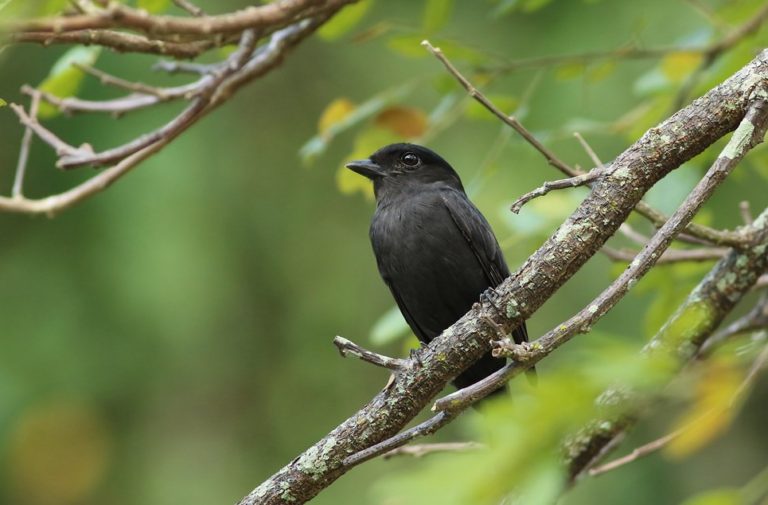Birdfinding.info ⇒ Fairly common but can be difficult to find outside the breeding season. Often found in edge habitats and semiopen woodlands with mature trees. As with other becards, its nest is a large, suspended, “globular” mass that can sometimes be a helpful clue to finding it. Sites where it is consistently present include Stewart Town, Hardwar Gap, San San, and Ecclesdown Road.
Jamaican Becard
Pachyramphus niger
Family: Tityridae
Endemic to Jamaica, where it is a resident of humid montane and foothill woodlands the length of the island.
Identification
Male is black above, with underparts that usually appear a shade or two paler. Readily distinguished from other all-black birds by its bull-headed shape, short, thick bill, and upright posture when perched.
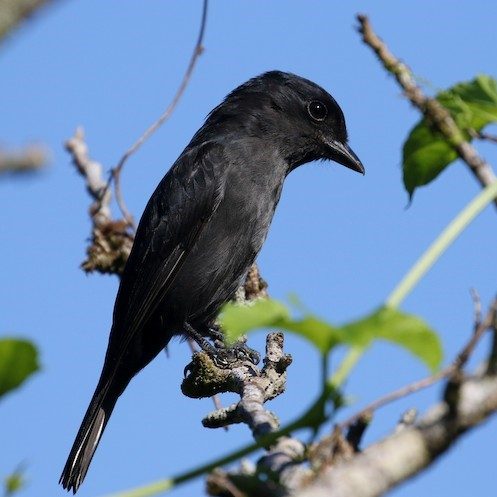
Jamaican Becard, male. (Stewart Town, Jamaica; February 2, 2019.) © Matthew Grube
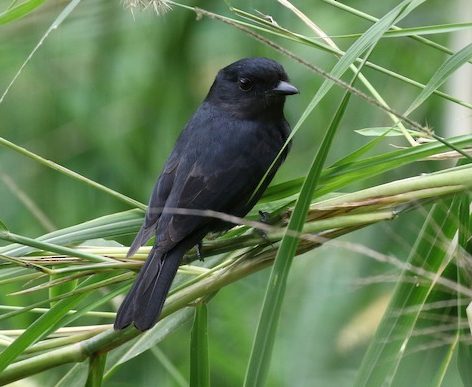
Jamaican Becard, male. (Mount Edge, Jamaica; January 28, 2019.) © Michael Woodruff
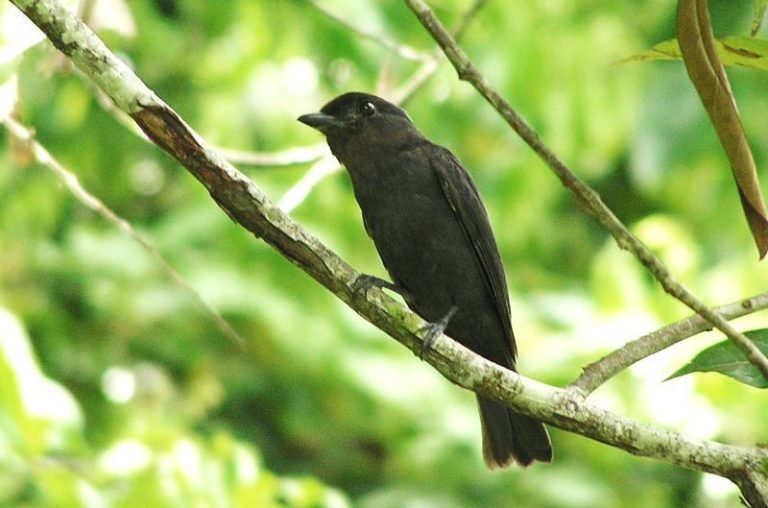
Jamaican Becard, male. (Ecclesdown Road, Jamaica; May 6, 2006.) © Jan van den Broeck
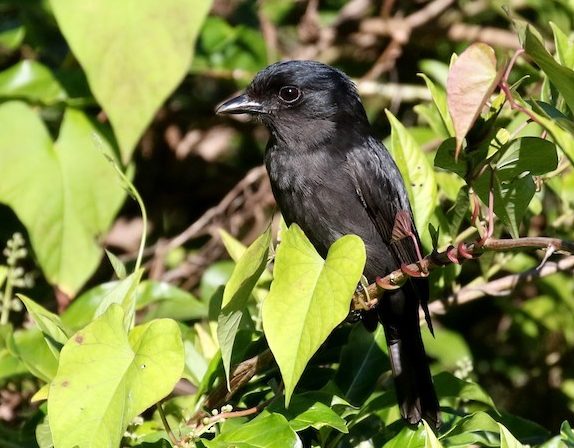
Jamaican Becard, male. (Stewart Town, Jamaica; February 2, 2019.) © Matthew Grube
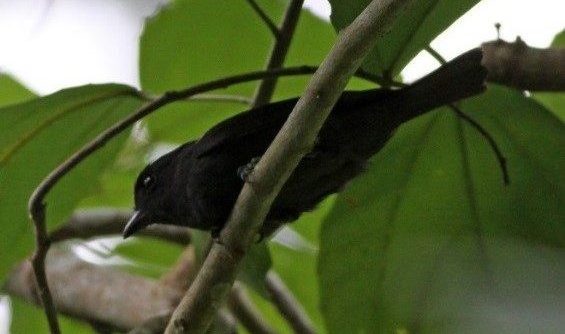
Jamaican Becard, male foraging overhead. (Ecclesdown Road, Jamaica; March 22, 2009.) © Ron Knight
The female’s coloration is distinctive: brown above, pale gray below, with a rusty-orange or buffy wash on the cheeks and throat. When seen in good light, the head, wings, and tail are reddish-brown, while the back is more grayish.
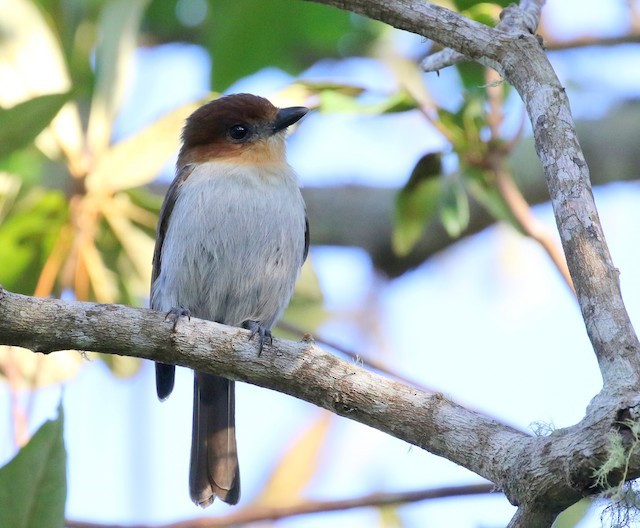
Jamaican Becard, female. (Hardwar Gap, Jamaica; January 28, 2019.) © Matthew Grube
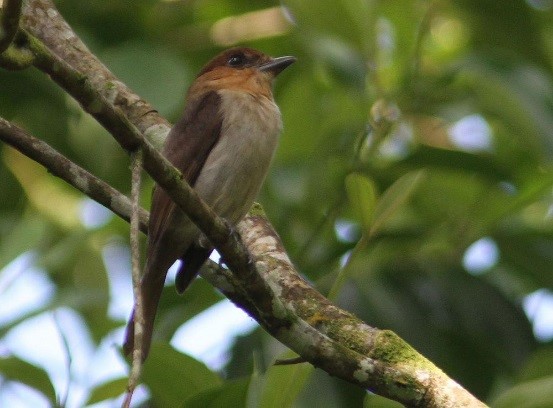
Jamaican Becard, female. (San San, Jamaica; January 29, 2011.) © Mikko Pyhälä

Jamaican Becard, female, ventral view—note buffy wash on throat. (Ecclesdown Road, Jamaica; January 15, 2018.) © Charles Hesse TROPICAL BIRDING
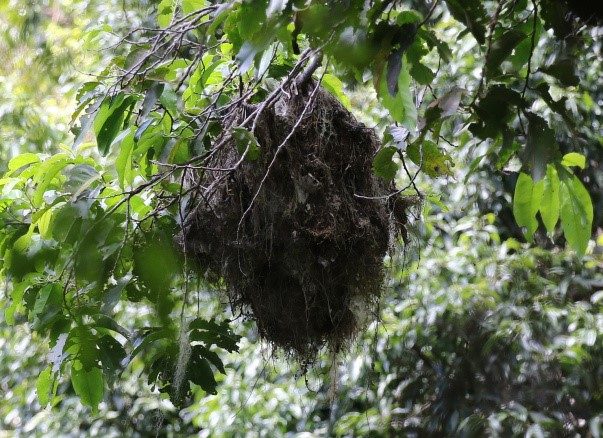
Jamaican Becard nest—a large, suspended, “globular” mass that is sometimes a helpful clue to finding the owners. (Hardwar Gap, Jamaica; February 2018.) © Paul and Sally Bartho
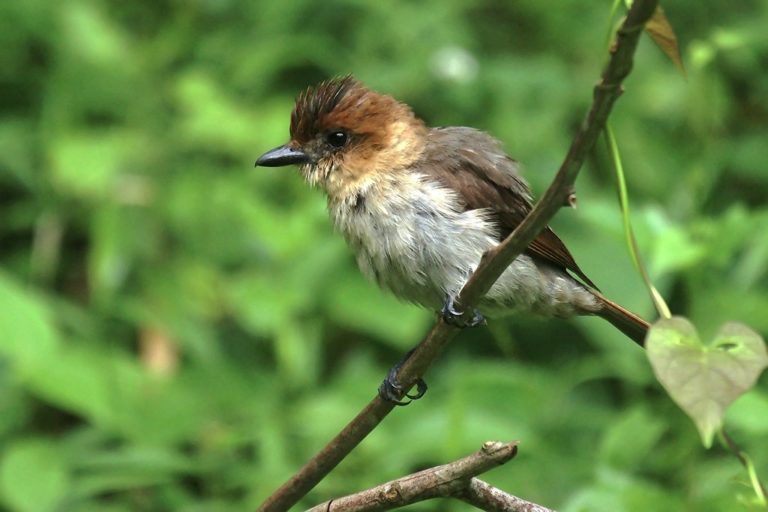
Jamaican Becard, female. (Vaughansfield, Jamaica; July 3, 2011.) © Dave Irving
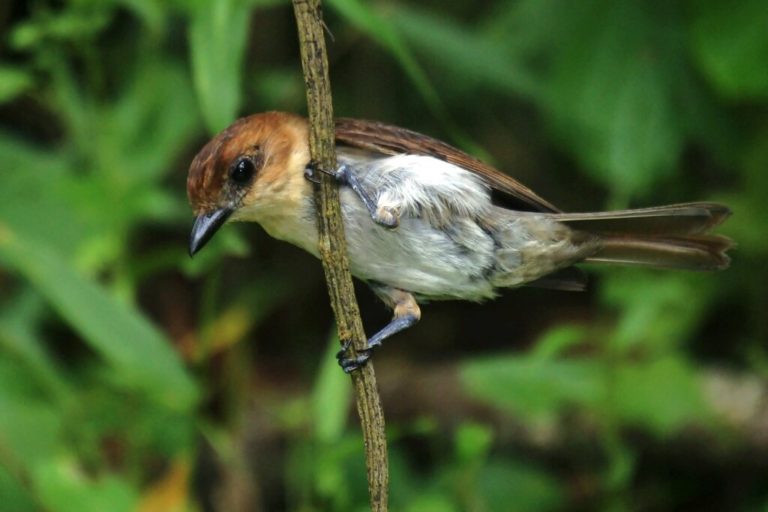
Jamaican Becard, female. (Vaughansfield, Jamaica; July 3, 2011.) © Dave Irving
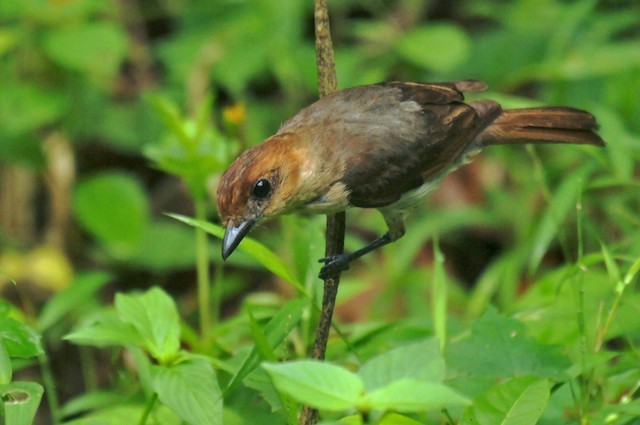
Jamaican Becard, female, dorsal view—note grayish back. (Vaughansfield, Jamaica; July 3, 2011.) © Dave Irving
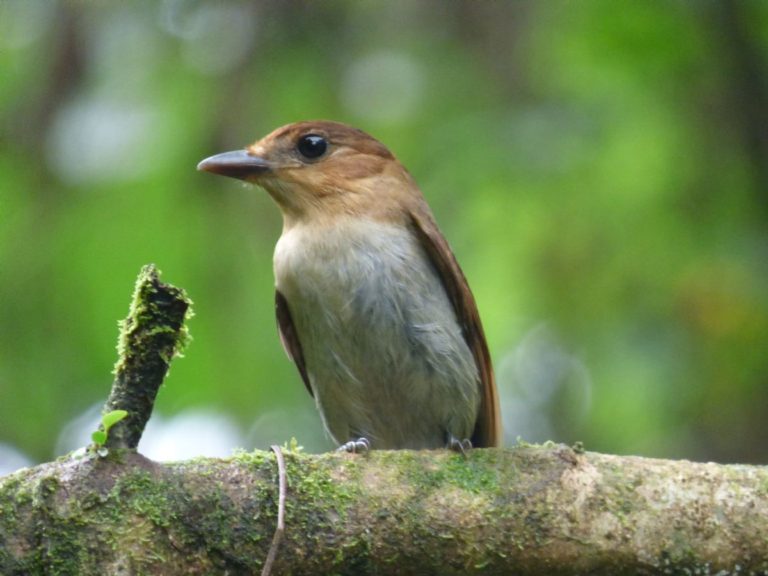
Jamaican Becard, female. (Bluefields Mountain, Jamaica; December 4, 2016.) © Håkan Carlestam

Jamaican Becard, female. (Green Castle Estate, Jamaica; March 2014.) © Eric Hynes
Immatures resemble adult females, but may lack some of the bright reddish and buffy tones. Males molting into adult plumage become blotchy with blackish patches.
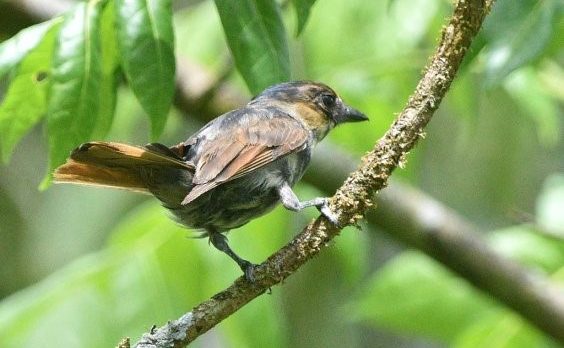
Jamaican Becard, immature male molting into adult plumage. © Ian Silvester
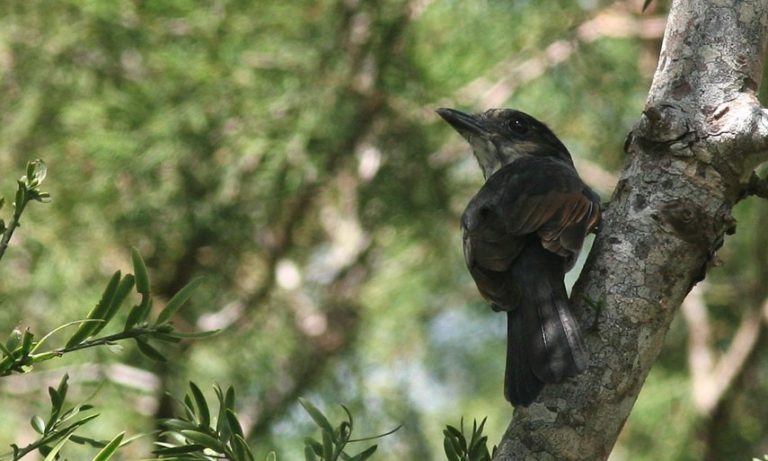
Jamaican Becard, immature male molting into adult plumage. (Cinchona Botanical Gardens, Jamaica; March 2009.) © Paul Jones
Voice. Song is an excited chatter with a squeaky, “rubber duck” quality, often ending with a long, fading note:
Notes
Monotypic species.
References
eBird. 2019. eBird: An online database of bird distribution and abundance. Cornell Lab of Ornithology, Ithaca, N.Y. http://www.ebird.org. (Accessed April 28, 2019.)
Haynes-Sutton, A., A. Downer, R. Sutton, and Y.-J. Rey-Millet. 2009. A Photographic Guide to the Birds of Jamaica. Princeton University Press, Princeton, N.J.
Raffaele, H., J. Wiley, O. Garrido, A. Keith, and J. Raffaele. 1998. A Guide to the Birds of the West Indies. Princeton University Press, Princeton, N.J.
